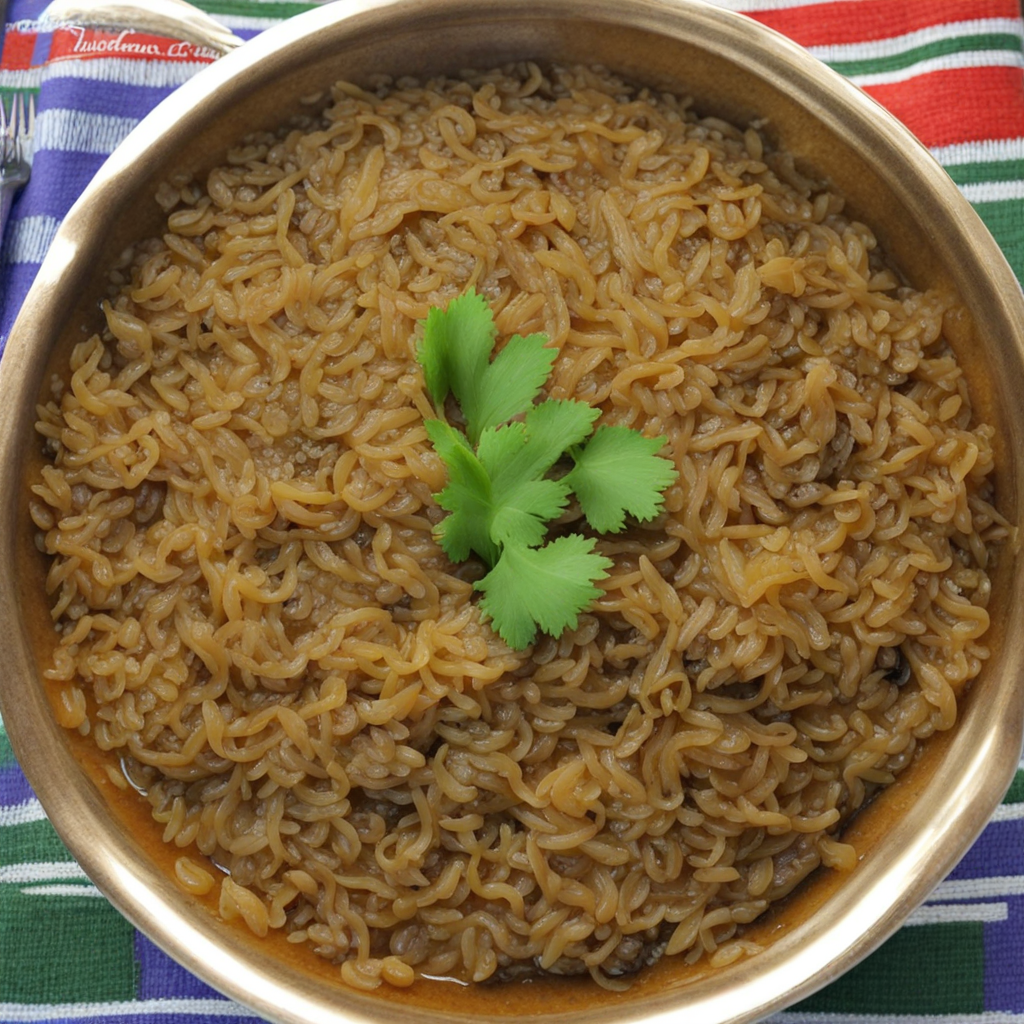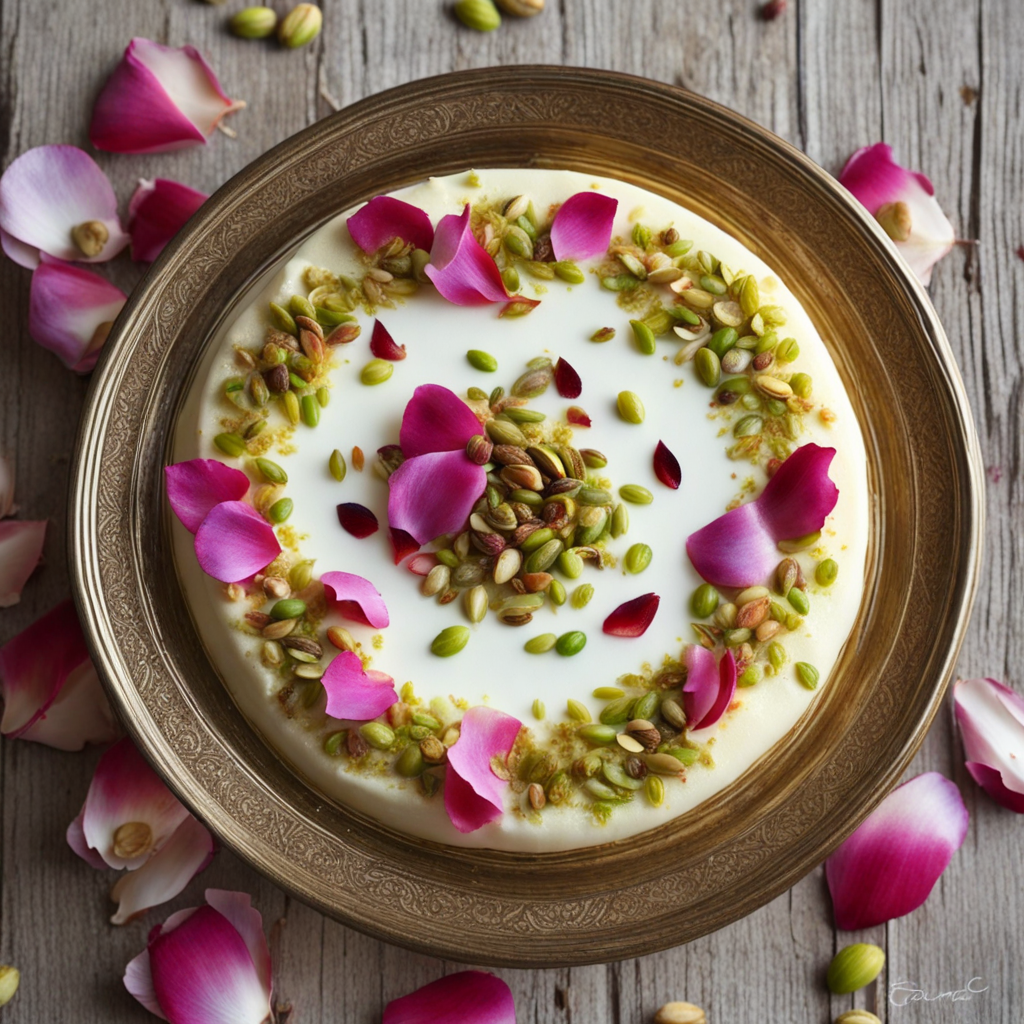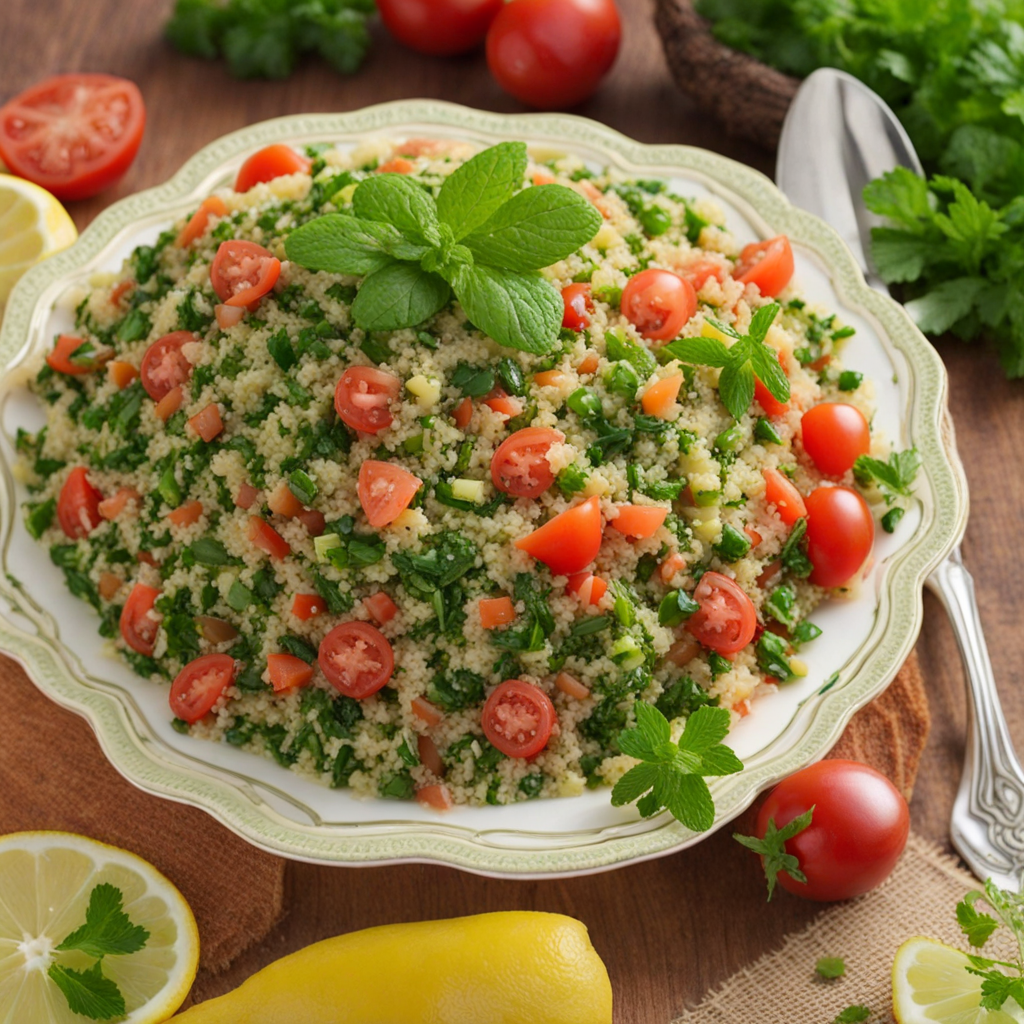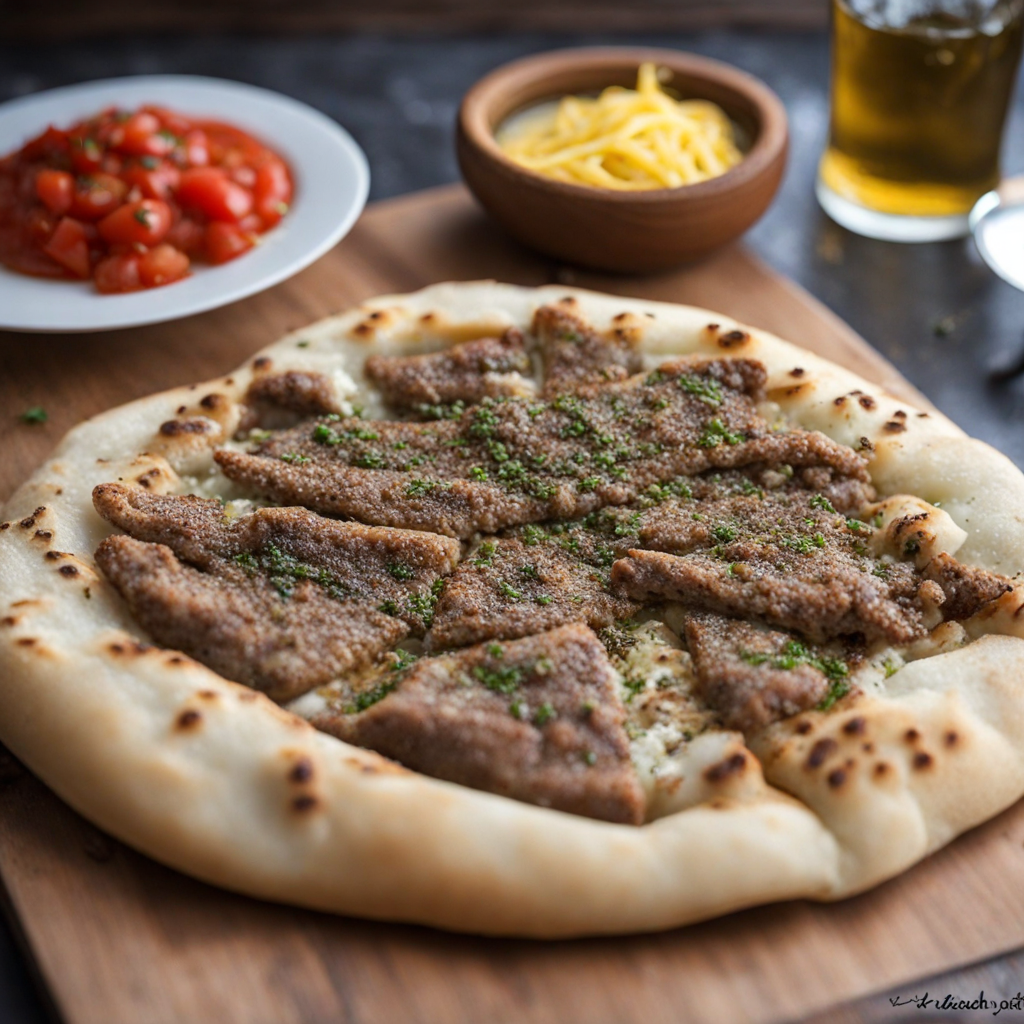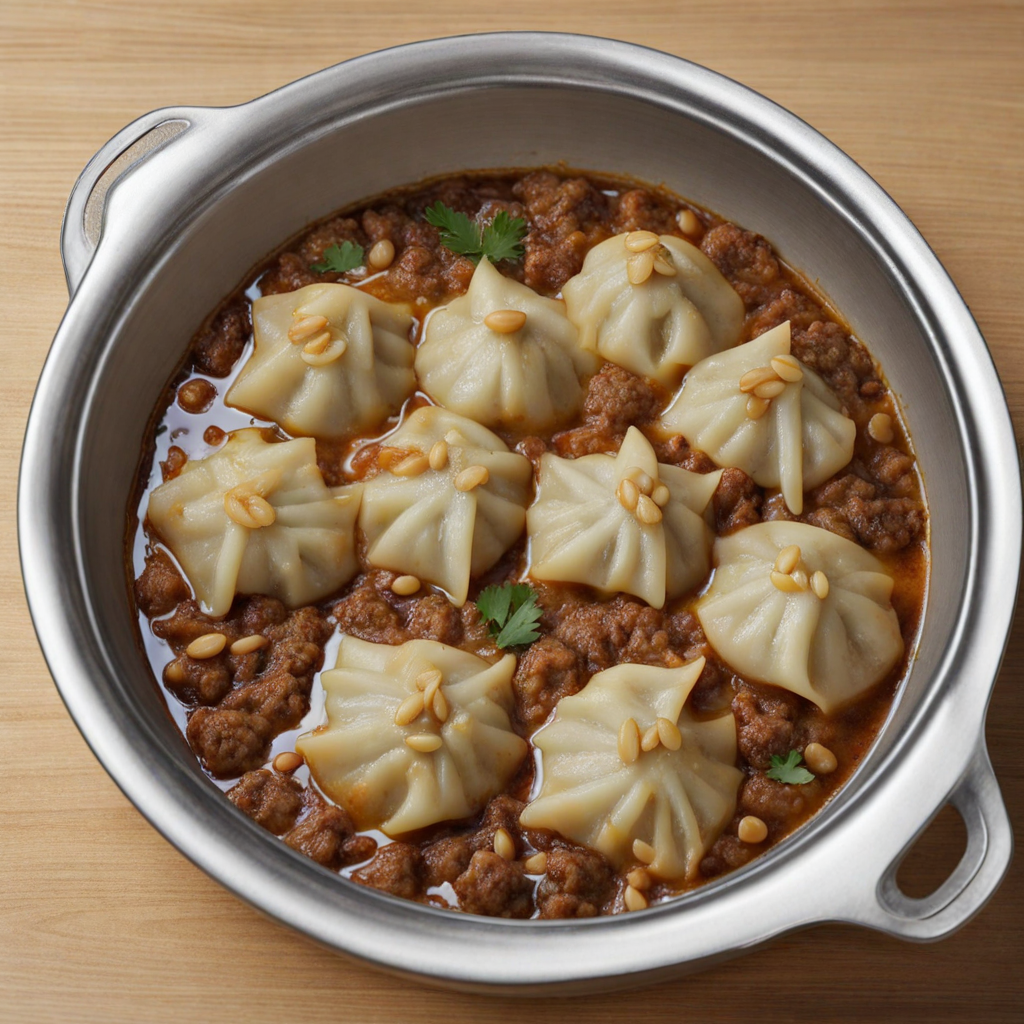Mujaddara
Mujaddara is a traditional Syrian dish that beautifully marries the earthy flavors of lentils and the subtle sweetness of caramelized onions. At its core, Mujaddara consists of cooked lentils, rice or bulgur, and is often garnished with fried onions that add a delightful crunch and depth of flavor. The dish is seasoned with a variety of spices, typically including cumin, which lends a warm, aromatic quality that enhances the overall taste experience. The combination of ingredients results in a hearty, wholesome meal that is both satisfying and nourishing. One of the striking features of Mujaddara is its versatility. It can be served as a main dish or a side, complementing various proteins or vegetables. It is often accompanied by a side of yogurt or a fresh salad, which adds a refreshing contrast to the rich, nutty flavors of the lentils and rice. The balance of textures—from the creamy lentils to the crispy onions—creates a delightful eating experience that keeps you coming back for more. Mujaddara is not just a dish; it carries a cultural significance that reflects the heart of Syrian cuisine. It is a staple of comfort food, often made during gatherings and celebrations, symbolizing hospitality and warmth. The simplicity of its ingredients belies its complex flavors, making it a perfect introduction for those looking to explore the rich culinary heritage of Syria. Enjoying Mujaddara is an invitation to savor the joys of home-cooked meals and the communal spirit they foster.
How It Became This Dish
The History of Mujadara: A Culinary Gem of Syrian Heritage Mujadara, a simple yet profoundly satisfying dish, is a cornerstone of Syrian cuisine and has captured the hearts (and stomachs) of many across the Middle East and beyond. This humble dish, consisting primarily of lentils, rice (or bulgur), and caramelized onions, embodies the essence of comfort food while reflecting a rich tapestry of historical influences, cultural significance, and culinary evolution. #### Origins and Ingredients The origins of mujadara can be traced back to ancient civilizations in the Levant region, where lentils were among the first cultivated crops. Archaeological evidence suggests that lentils were domesticated in the Near East around 8000 BCE, making them one of humanity's earliest food sources. The dish itself is thought to have emerged in the context of agricultural societies that relied heavily on legumes for sustenance. The combination of lentils and grains, such as rice or bulgur, created a balanced meal that was not only nutritious but also affordable for the masses. The name "mujadara" is derived from the Arabic word "jidar," meaning "to scatter," which may refer to the way the lentils and grains are mixed together. The dish is also known by various names across the Arab world, including "mujaddara" in Lebanon and Jordan, and "mujadara" in Palestine. Each region puts its unique spin on the dish, but the core elements remain consistent, showcasing the versatility of the ingredients. #### Cultural Significance Mujadara holds a special place in the hearts of many in Syria and the broader Middle Eastern community. It is often seen as a comfort food, a dish that evokes feelings of home and nostalgia. Traditionally served during periods of fasting, such as Lent or Ramadan, mujadara is a staple for many families, providing sustenance and nourishment during these times of reflection and devotion. In addition to its religious significance, mujadara is often associated with communal and family gatherings. It is a dish that brings people together, symbolizing hospitality and the sharing of resources. The communal aspect of enjoying mujadara is significant; it is typically served in a large platter, allowing diners to help themselves and fostering a spirit of togetherness. Mujadara is also an example of the broader culinary practice of "meze," where various small dishes are served alongside one another. This reflects the Levantine tradition of sharing and enjoying food in a communal manner, enhancing the social experience of dining. In many households, it is accompanied by a side of yogurt or a salad, further enriching the meal and creating a balance of flavors. #### Development Over Time As with many traditional dishes, mujadara has evolved over time, influenced by historical events, trade, and cultural exchanges. The Silk Road and various conquests and migrations brought new spices, cooking techniques, and culinary influences to the region. While the basic components of mujadara have remained largely unchanged, variations have emerged that reflect local tastes and ingredients. In modern Syrian cuisine, mujadara can be found in both home kitchens and restaurants, where chefs often experiment with presentation and flavors. Some contemporary interpretations include the addition of spices such as cumin, coriander, or even a hint of cinnamon to enhance the dish's flavor profile. Additionally, the onions are sometimes caramelized to a golden-brown perfection, adding a sweet and savory depth that elevates the dish. Mujadara also serves as a canvas for creativity, with some chefs incorporating vegetables such as roasted eggplant or sautéed greens. The dish can be served warm or at room temperature, making it a versatile option for various occasions. Its adaptability allows it to fit seamlessly into both casual family dinners and elegant gatherings. The rise of plant-based diets and the increasing interest in healthy eating have also contributed to mujadara's popularity. With its high protein content and fiber from lentils, it appeals to health-conscious individuals and those seeking vegetarian or vegan options. This newfound appreciation for traditional dishes like mujadara showcases the importance of cultural heritage in modern cuisine. #### Global Recognition In recent years, mujadara has gained international recognition, transcending its regional roots. Food enthusiasts and chefs worldwide have embraced this dish, showcasing it in various culinary contexts. As Middle Eastern cuisine has become increasingly popular, mujadara has found its way onto menus in restaurants across the globe, often celebrated for its simplicity and robust flavors. Social media has played a significant role in popularizing mujadara, with food bloggers and influencers sharing their variations and interpretations of the dish. The visual appeal of mujadara, with its vibrant colors and enticing presentation, has made it a favorite subject for food photography, furthering its reach and appreciation. #### Conclusion Mujadara is more than just a dish; it is a reflection of the rich culinary history and cultural heritage of Syria and the broader Middle East. Its origins date back thousands of years, rooted in agricultural practices that continue to resonate today. The dish's cultural significance is evident in its role during communal gatherings, religious observances, and its status as comfort food. As mujadara continues to evolve and adapt to contemporary culinary trends, it remains a beloved staple that bridges generations and cultures. Its simplicity, nutritious ingredients, and versatility ensure that mujadara will endure as a cherished dish for years to come, celebrating the flavors and traditions of the Syrian people and the broader Arab world. Whether enjoyed in a modest home kitchen or a gourmet restaurant, mujadara stands as a testament to the enduring power of food as a means of connection, nourishment, and cultural expression.
You may like
Discover local flavors from Syria


